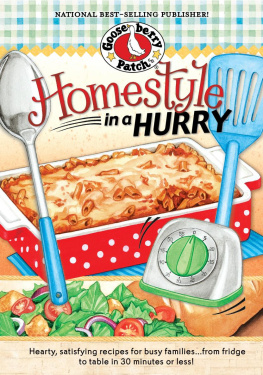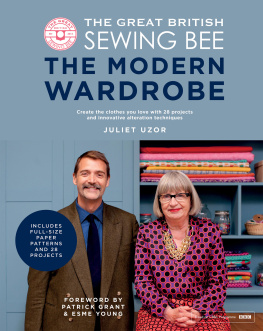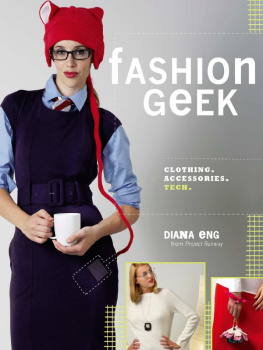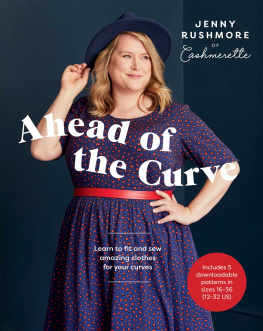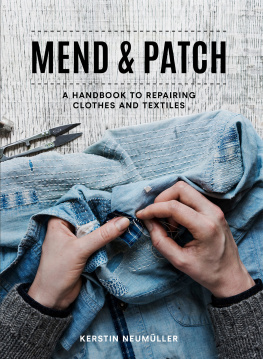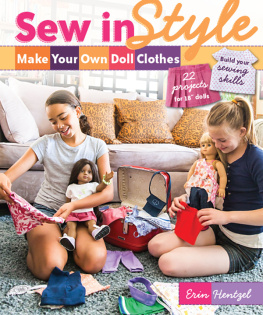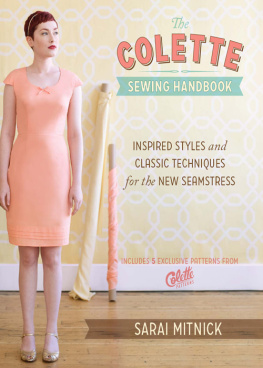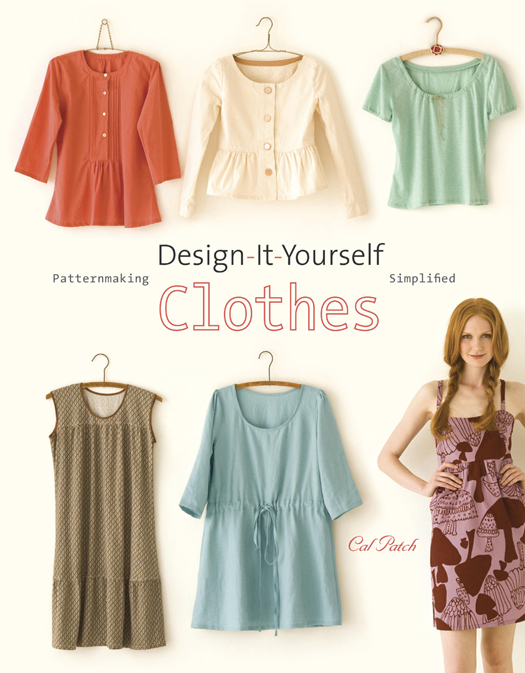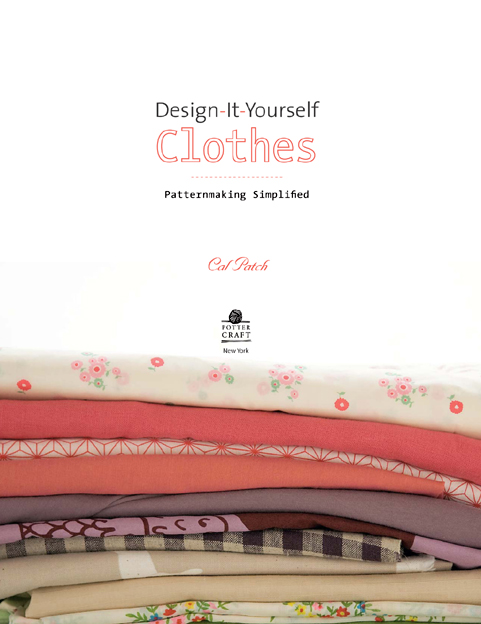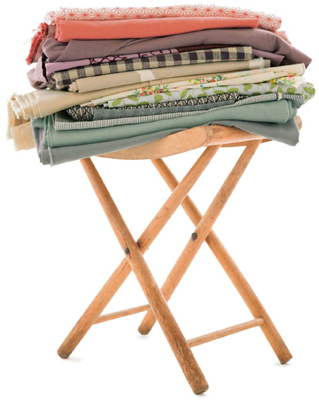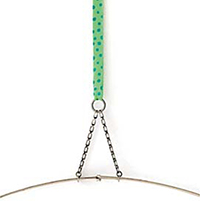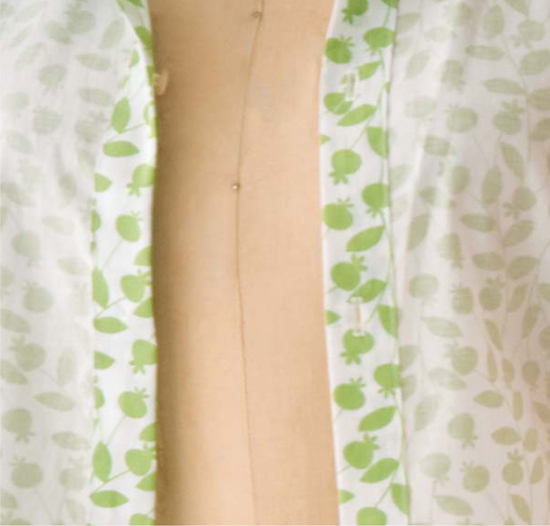Copyright 2009 by Cal Patch
Photographs copyright 2009 by Potter Craft, a division of Random House
All rights reserved.
Published in the United States by Potter Craft, an imprint of the Crown Publishing Group, a division of Random House, Inc., New York.
www.crownpublishing.com
www.pottercraft.com
POTTER CRAFT and colophon is a registered trademark of Random House, Inc.
Library of Congress Cataloging-in-Publication Data
Patch, Cal.
Design-it-yourself clothes : patternmaking simplified / Cal Patch.1st ed.
p. cm.
Includes bibliographical references and index.
eBook ISBN 978-0-7704-3467-0
Trade paperback ISBN 978-0-307-45139-2
1. DressmakingPattern design. I. Title.
TT520.P322 2009
646.4072-dc22
2008050344
Cover design by Kara Plikaitis
Photography by Heather Weston
Illustrations by Cal Patch & Frances Soohoo
v3.1
Introduction
WHY PATTERNMAKING?
P ICTURE THIS : Youre out shopping, maybe at your favorite vintage shop, maybe at a fancy designer boutique, and you see something familiar. Hmm. Where have you seen that dress before, you wonder. In a magazine? A movie? Oh wait, you remember! Youve seen it in your dreams!
You try it on, and for a moment, you are enraptured: Life is complete! You will forevermore be the one envied at every party for what you are wearing. But then you do a reality check. The color, now that you are thinking clearly, doesnt suit you at all. The fabric is a little more synthetic than youd like. The waist is actually too small, and wouldnt it be way dreamier with a wider, kimono-esque sleeve? And a different neckline? Not to mention longer, with more flare at the hemline, and some shirring at the bust? And again, you realize, this scenario is all too familiar: You know exactly what you want, and youve got the sewing skills to pull it off, if only there werent that one, teensy-weensy recurring problem: the pattern. Even the best seamstress needs one, but a pattern for the vision in your head just plain does not exist. Yet.
Its no secret that sewing is the new hot craftmore people aresewing now than ever before. Sooner or later, most stitchers want to tackle more advanced projects, namely clothing. This is where the trouble sets in. The problem isnt in the sewing, but in the pattern. Unfortunately, finding the perfect pattern for what you want to make can be anywhere from difficult to impossible. The sewing pattern industry, with a few noteworthy exceptions, doesnt seem to be quite in sync with the surge in modern sewerssewers who want to make clothes that look like what they might buy at their favorite retailers. The new generation of indie seamstresses is watching Project Runway , reading ReadyMade and Selvedge , and shopping at small boutiques selling one-offs by local designers. You know what you want to wear but cant always find it on a rack. You know how to sew but dont see patterns that resemble what you want to make. You do want to make a unique look based on your own personal taste, influences, and body type. And you need the freedom to create patterns as your taste evolves over time. Whats an intrepid stitcher to do?
Well, the obvious answer is to learn how to make your own sewing patterns! Patternmaking is an age-old art form, which, at its core, is extremely simple. The clothing we currently wear tends to be relatively simple from a patternmakers point of view. We dont wear finely tailored suits or dresses with princess seams, darts, and gussets. We wear simple knit tops, skirts, loose dresses, basic woven shirts, and pants. Their style tends to come from details, as opposed to dramatic or complicated cut and construction. Thus, its quite possible to teach todays sewers how to make their own patterns. And this book does just that in a fun, concise volume for the modern girl.
There are other reasons, besides the lack of selection, to learn how to make patterns. For example, three little letters: F-I-T. Fit can make or break a look. Whether shopping for clothing or patterns, finding ones that fit is frequently a struggle. This is because clothing manufacturers cant possibly make clothes to fit every conceivable body height, width, shape, and every combination of those factors. So they aim for the middle ground and hope for the best. Commercial sewing patterns have the same problem, though they do offer the possibility of simple adjustments, like altering length or combining two sizes in different areas to approximate your body. But only building a pattern from scratch, around your own personal set of numbers, can ultimately result in a garment that fits like it was made for you. Because it was!
A final reason to make your own patterns is your own unique personal taste and style. Its pretty challenging to develop a completely original look if youre limited to what you can find at the local mall. Vintage is an option, but good luck finding just the right piece that also happens to a) be in decent condition, b) be affordable, and c) oh yeah, fit you! Independent designers can be a fantastic resource if you can find one who answers to the same muse you do, and if you can afford their wares. But if you long to stand out from the crowd in a way that youve never seen expressed before, it could be quite a wait before you see your dreams hanging on any rack. As a designer myself, I relate to this scenario more than any other, and you have my sincere sympathies. But before we cue the music for our pity party, Ive got some news for you: The wait is over. You can actually make the clothes you see in your headyouve just got some learning to do. But its going to be fun, I promise!
In this book we are going to take the problem of sewing patterns into our own hands. I have organized it like a course in pattern-making, so youll learn basic principles first, and then build on them in successive projects. You will get the most out of this book if you tackle the projects in order, but if you decide (as were all inclined) to skip around, just be aware that you may occasionally need to backtrack a bit for certain projects. But whether you choose the straight path or the meandering one, its going to be a wonderful journey! Well discuss the tools used in patternmaking and the importance of selecting the right fabric for every garment. Youll learn how to take your own unique set of measurements, all of which add up to a map of your body, which is not the same as anyone elses. You will learn how to use those measurements to draft basic patterns for an A-line skirt, a T-shirt, a button-down shirt, pants, and a dress. With simple add-ons like pockets, trims, or ruffles, these five patterns alone could build an entire wardrobe and keep your sewing machine humming for years, but theyre merely the beginning! Following each basic pattern lesson, you will find two variation projects, in which youll alter a copy of the basic pattern to create more detailed versions. Once youve got these drafting skills down, Ill show you some of the methods for manipulating the foundation patterns even more to fulfill your inner designers vision. Well add stylized seams, flare, gathering, pleats and tucks, pockets, collarsjust about anything you can dream up. Can you believe it? Lets get going!




